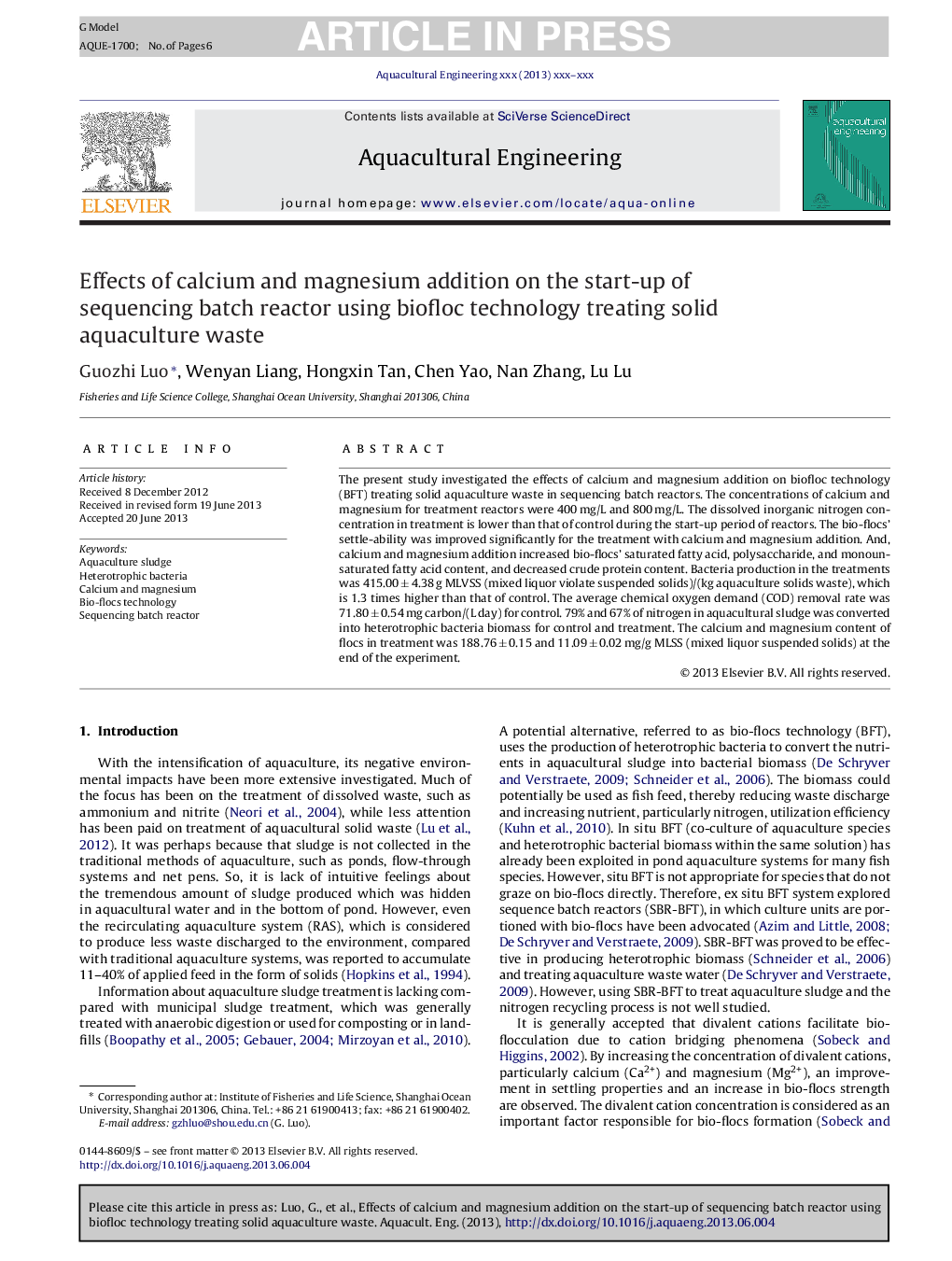| Article ID | Journal | Published Year | Pages | File Type |
|---|---|---|---|---|
| 6381364 | Aquacultural Engineering | 2013 | 6 Pages |
Abstract
The present study investigated the effects of calcium and magnesium addition on biofloc technology (BFT) treating solid aquaculture waste in sequencing batch reactors. The concentrations of calcium and magnesium for treatment reactors were 400 mg/L and 800 mg/L. The dissolved inorganic nitrogen concentration in treatment is lower than that of control during the start-up period of reactors. The bio-flocs' settle-ability was improved significantly for the treatment with calcium and magnesium addition. And, calcium and magnesium addition increased bio-flocs' saturated fatty acid, polysaccharide, and monounsaturated fatty acid content, and decreased crude protein content. Bacteria production in the treatments was 415.00 ± 4.38 g MLVSS (mixed liquor violate suspended solids)/(kg aquaculture solids waste), which is 1.3 times higher than that of control. The average chemical oxygen demand (COD) removal rate was 71.80 ± 0.54 mg carbon/(L day) for control. 79% and 67% of nitrogen in aquacultural sludge was converted into heterotrophic bacteria biomass for control and treatment. The calcium and magnesium content of flocs in treatment was 188.76 ± 0.15 and 11.09 ± 0.02 mg/g MLSS (mixed liquor suspended solids) at the end of the experiment.
Keywords
Related Topics
Life Sciences
Agricultural and Biological Sciences
Aquatic Science
Authors
Guozhi Luo, Wenyan Liang, Hongxin Tan, Chen Yao, Nan Zhang, Lu Lu,
